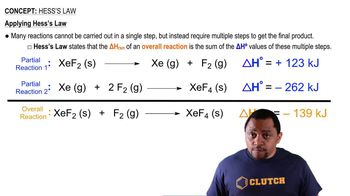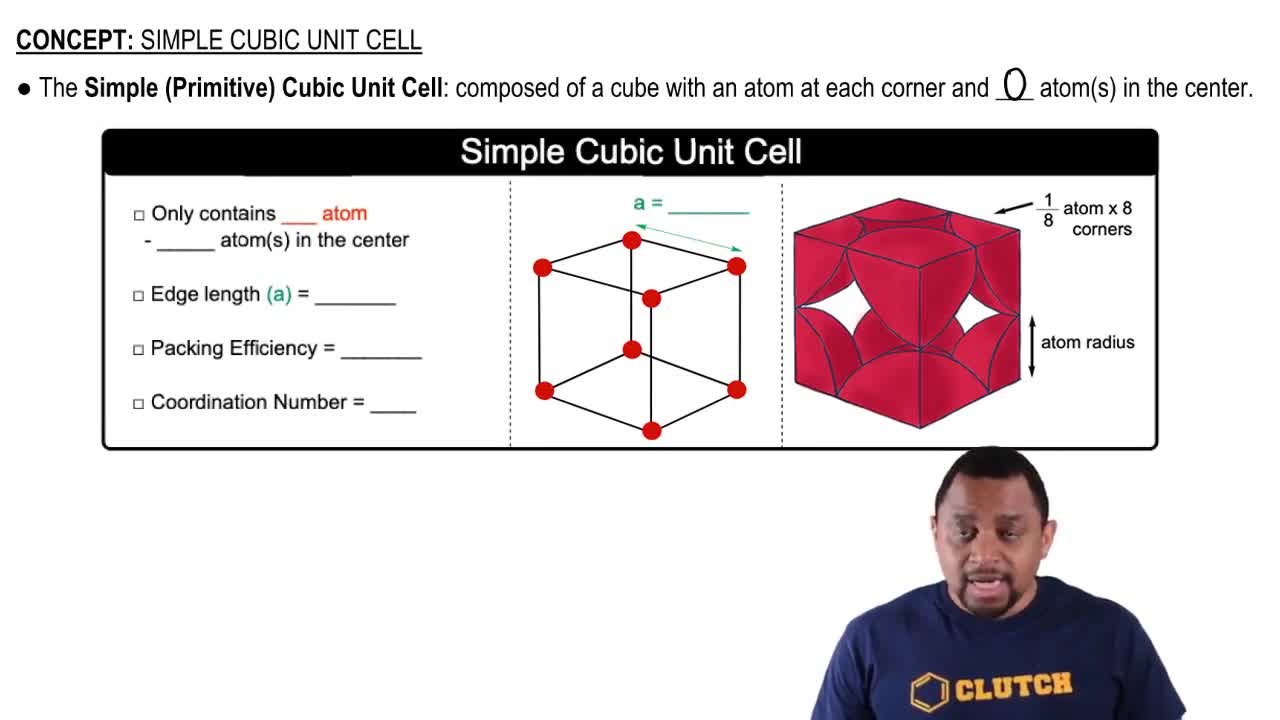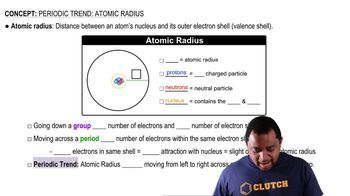In their study of X-ray diffraction, William and Lawrence Bragg determined that the relationship among the wavelength of the radiation 1l2, the angle at which the radiation is diffracted 1u2, and the distance between planes of atoms in the crystal that cause the diffraction (d) is given by nl = 2d sin u. X rays from a copper X-ray tube that have a wavelength of 1.54 Å are diffracted at an angle of 14.22 degrees by crystalline silicon. Using the Bragg equation, calculate the distance between the planes of atoms responsible for diffraction in this crystal, assuming n = 1 (first-order diffraction).
Ch.12 - Solids and Modern Materials

Brown14th EditionChemistry: The Central ScienceISBN: 9780134414232Not the one you use?Change textbook
Chapter 12, Problem 121
Germanium has the same structure as silicon, but the unit cell size is different because Ge and Si atoms are not the same size. If you were to repeat the experiment described in the previous problem but replace the Si crystal with a Ge crystal, would you expect the X rays to be diffracted at a larger or smaller angle u?
 Verified step by step guidance
Verified step by step guidance1
Understand that the problem involves X-ray diffraction, which is described by Bragg's Law: \(n\lambda = 2d\sin\theta\), where \(n\) is the order of reflection, \(\lambda\) is the wavelength of the X-rays, \(d\) is the distance between atomic planes, and \(\theta\) is the angle of diffraction.
Recognize that the problem is asking about the change in the angle of diffraction (\(\theta\)) when the crystal is changed from silicon (Si) to germanium (Ge).
Recall that germanium (Ge) and silicon (Si) have the same crystal structure, but the atomic size of Ge is larger than that of Si, which means the distance between atomic planes (\(d\)) in Ge is larger than in Si.
According to Bragg's Law, if the distance \(d\) increases and the wavelength \(\lambda\) remains constant, the angle \(\theta\) must adjust to satisfy the equation. Specifically, for a given order \(n\), an increase in \(d\) would result in a decrease in \(\sin\theta\), which implies a smaller angle \(\theta\).
Conclude that replacing the Si crystal with a Ge crystal would result in the X-rays being diffracted at a smaller angle \(\theta\).

Verified video answer for a similar problem:
This video solution was recommended by our tutors as helpful for the problem above.
Video duration:
2mWas this helpful?
Key Concepts
Here are the essential concepts you must grasp in order to answer the question correctly.
Bragg's Law
Bragg's Law relates the angle of diffraction of X-rays to the spacing between atomic planes in a crystal. It is expressed as nλ = 2d sin(θ), where n is an integer, λ is the wavelength of the X-rays, d is the distance between crystal planes, and θ is the angle of diffraction. Understanding this law is crucial for predicting how changes in atomic spacing affect diffraction angles.
Recommended video:
Guided course

Hess's Law
Crystal Structure and Unit Cell
The crystal structure refers to the orderly arrangement of atoms in a crystalline solid, characterized by its unit cell, the smallest repeating unit that defines the entire structure. In this case, germanium (Ge) and silicon (Si) have similar structures but different unit cell sizes due to the differing atomic radii. This difference in size affects the spacing of atomic planes, which in turn influences the diffraction pattern.
Recommended video:
Guided course

Simple Cubic Unit Cell
Atomic Radius and Diffraction Angles
The atomic radius is the distance from the nucleus of an atom to the outermost electron shell. In the context of X-ray diffraction, a larger atomic radius in Ge compared to Si results in a larger unit cell and increased interplanar spacing. Consequently, this larger spacing leads to a change in the diffraction angle, typically resulting in smaller angles for larger unit cells, as per Bragg's Law.
Recommended video:
Guided course

Atomic Radius
Related Practice
Textbook Question
Textbook Question
(a) The density of diamond is 3.5 g/cm3, and that of graphite is 2.3 g/cm3. Based on the structure of buckminsterfullerene, what would you expect its density to be relative to these other forms of carbon?
Textbook Question
(b) X-ray diffraction studies of buckminsterfullerene show that it has a face-centered cubic lattice of C60 molecules. The length of an edge of the unit cell is 14.2 Å. Calculate the density of buckminsterfullerene.
